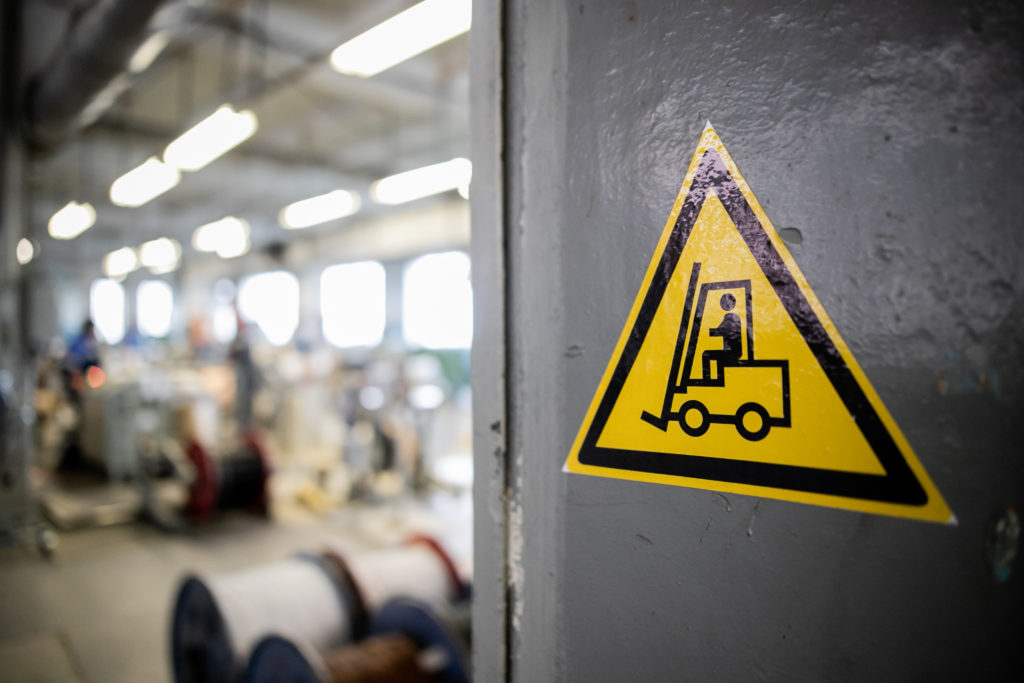
How To Prevent Forklift Hazards in the Workplace
Operating forklifts can be a dangerous job. In fact, according to OSHA, there are between 20,000 and 35,000 forklift-related accidents per year. If you’re aware of the most common forklift hazards in the workplace and know how to prevent them, you can set yourself and your team up for success.
10 Forklift Hazards in the Workplace (and How to Prevent Them!)
If you or your employees work with forklifts, it’s important to be educated on common forklift hazards in the workplace and what you can do to stay safe. Read on to get the inside scoop and stay until the end, where you’ll discover a safe, convenient, versatile forklift attachment that can make your job easier.
1. Improper Use of Forklifts
A forklift is designed for important jobs in an array of facilities. Every operator should follow the OSHA formal training program to learn how to stay safe. However, some employees won’t take the job seriously and will misuse the equipment.
You might find people racing, taking sharp turns, or using the forklift in destructive ways. This behavior can lead to people getting hurt and equipment getting damaged.
The Fix:
Ensure that every employee gets the proper training from OSHA. Then, enforce these rules and communicate consequences or penalties for anyone who doesn’t comply.
2. Blind Spots
If a forklift is carrying large or heavy loads, the driver’s view will be obstructed. They might be unable to see directly in front of them and have dangerous blind spots. This could harm pedestrians, employees, and materials.
The Fix:
If the driver’s view is obstructed, they should drive the machinery in reverse. Before that, you should make sure your driver is skilled and comfortable doing so. Also, keep pedestrians from forklift blind spots and minimize foot traffic in the area where the forklift is being used.
3. Unsecured Loads
Each forklift has a weight limit and attachments to help secure the loads. Clasps and backrests are also available to help keep loads secure, but they might end up feeling loose or wobbly. Unsecured loads could fall and get damaged or badly injure someone.
The Fix:
Every team member should know how to secure a load with straps and attachments safely. They should know the weight limit of each forklift as well.
4. Improper Maintenance
Just like any other piece of machinery, forklifts require routine maintenance. If they aren’t adequately cared for, you could be dealing with broken lights, damaged arms, and bad chains.
The Fix:
After every few uses, your forklift should be inspected. Perform a series of tests and assessments to ensure everything is in proper working order, and if it isn’t, don’t let anyone on the forklift until it’s fixed.
5. Poor Floor Conditions
When driving a forklift, uneven floors and surfaces can be detrimental. You’ll also want to avoid wet floors and areas cluttered with debris.
The Fix:
Before driving a forklift, always make sure your area is dry and clear of any random objects or debris. Also, forklifts should only be used in areas with flat terrains, or major issues could arise.
6. Low Ceilings and Overhead Obstructions
If ceilings are too low or something is hanging from the ceiling and obstructing the forklift’s path, this could be dangerous. It could collide with the top of the forklift or whatever it’s carrying.
The Fix:
Within your facility, always mark where the forklift can and can’t go within your facility. Take note of low ceilings, entryways, or light fixtures, and know how big every separate forklift is.
7. Pedestrians
Pedestrians can be detrimental to forklifts and should always stay out of their path. They can cause accidents if they’re unaware they’re in a forklift blind spot. Or, the forklift operator might try to maneuver around them at the last minute, which will also cause an accident.
The Fix:
Mark the work area with tape where employees can and can’t walk if they’re not involved with operating the forklifts. Also, make it clear where forklifts can and can’t go.
8. Dangerous Fuel
Forklift refueling or recharging areas can be extremely hazardous. Gas and other chemicals are required to recharge a forklift, and they are flammable and could cause fires or explosions.
The Fix:
Educate your staff and ensure they know not to smoke near the forklift recharging station. Designate a specific area for your recharging station that isn’t near smoke, electrical work, water, or anything else that could cause harm.
9. Worn-Out Seatbelts
Every forklift has a seatbelt or harness to secure the person operating the machinery. Drivers might not feel like wearing the seatbelt, but it’s a safety measure that should consistently be enforced.
The Fix:
Seatbelts should always be maintained and replaced if they become worn out or too loose. You also must ensure that every piece of safety equipment is the right size for any driver operating the forklift that day.
10. Hazardous Attachments
It’s common for facilities to invest in forklift attachments to help them perform various tasks. If these attachments aren’t properly used, workplace injuries can occur.
The Fix:
Every operator using forklift attachments needs to understand how to use them properly. Also, before using them, ensure all equipment is well maintained and inspected.
Invest in a Safe Forklift Attachment: Forklift Wrecker
Are you looking for a safe, convenient, and versatile forklift attachment option? Take a look at the Forklift Wrecker! It’s a durable forklift attachment that can move small- to medium-sized vehicles quickly and safely. This can be extremely helpful for car lots, impound lots, service garages, and more.
Contact our team to learn more about how it can improve your facility’s processes.
The material and information contained on this website is for general information purposes only. You should not rely upon the material or information on the website as a basis for making business, legal or other decisions.
